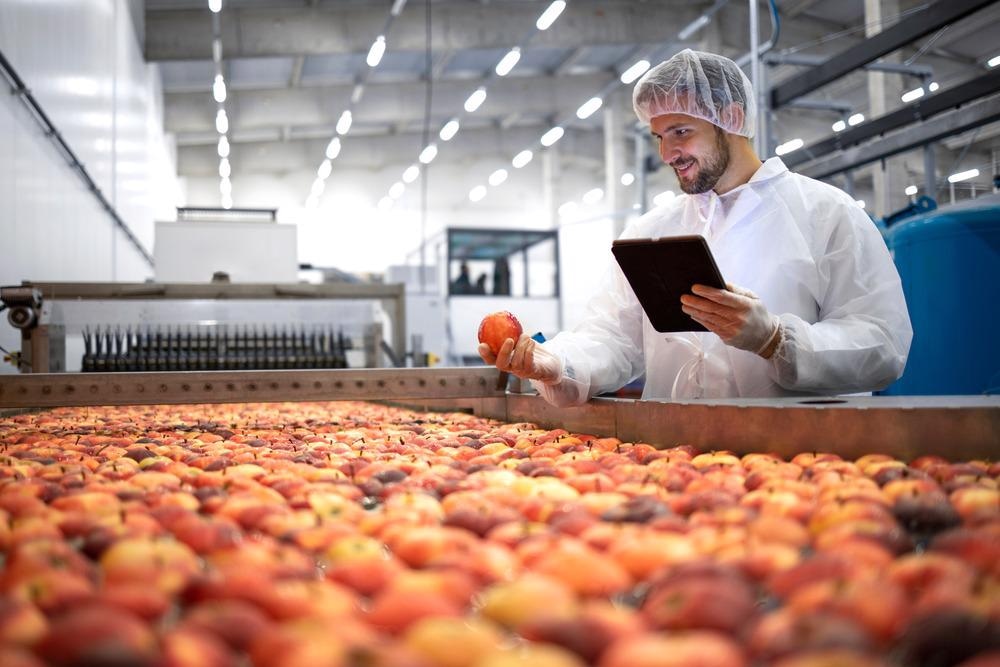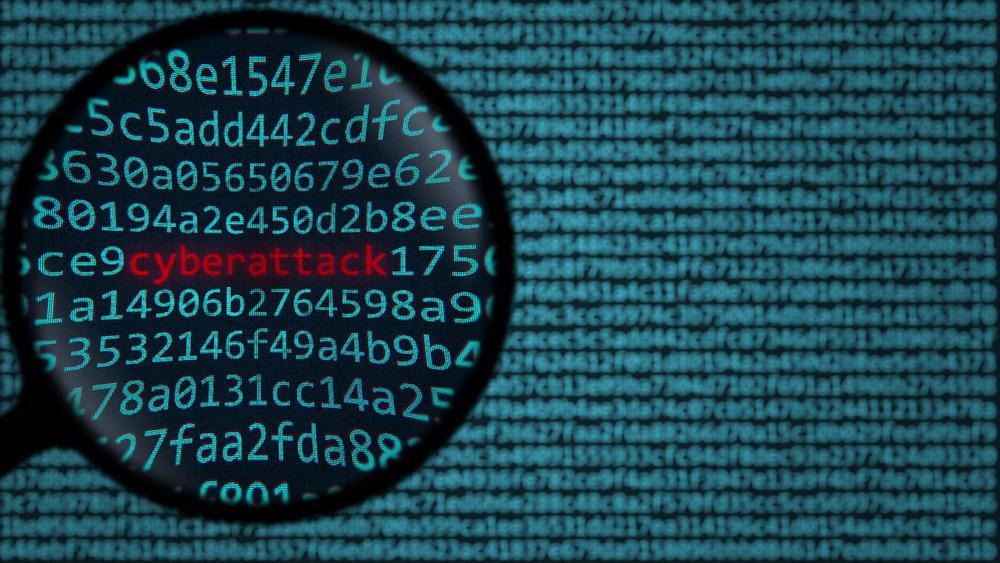As a result of the growing reliance on food due to a rising global population, the implementation of smart technology has made agriculture a viable and vulnerable target for agroterrorism. This emerging concern needs to be addressed to avoid the targeted destabilization of food production.

Image Credit: Aleksandar Malivuk/Shutterstock.com
The emergence of smart farming technologies in agriculture and the emergence of a new threat
To fulfill the rising demand for food, smart farming technologies and precision agriculture are becoming increasingly sought after. These technologies allow food production to meet the global demand by improving crop yield and productivity, decreasing the need for human labor, and increasing the accuracy of tasks such as crop sorting, weed eradication, and food processing.
In recent decades, smart farming has developed rapidly and now encompasses many data-driven technologies, which has resulted in a paradigm shift across agricultural practices. Modern ‘smart farms’ have devices and machinery connected in real-time allowing the completion of tasks ranging from checking the status of crops and soil to deploying drones to spray pesticides.
These technologies have allowed farmers to improve their expenditures by improving primary production. In Chile, remote sensors measuring irrigation levels in soil have reduced the volume of water used in farming by 70%. Farm data in India has been used to predict and prevent crop diseases, which reduced the risk associated with the failure of crop production. Other applications have also helped fruit farmers in Slovenia fight against pests.
Other tools of smart farming have also affected food processing. Data is now used to make operational decisions and optimize agricultural business models. This has financial and environmental implications, as data collection on food transport and consumption will allow stakeholders and food producers to improve the delivery of produce depending on season and region.
However, the use of smart farming and the increased reliance on smart communication technologies introduces a new threat for the farming industry by exposing it to cybersecurity threats. Cyberattacks have risen in popularity over recent years and have the potential to disrupt the economies of countries dependent on agriculture as smart farming introduces this risk to the center of farming itself.
Types and scale of cyberattacks on agricultural systems
In a 2020 review by Gupta et al, the authors outline the issues of security and privacy within the emerging cyber-physical environment of smart agriculture and elaborate on potential cyber-attack scenarios as part of agro-terrorism.
The researchers present the implications of a cyberattack as smart devices introduce the ability to remotely control and exploit on-field sensors and autonomous vehicles. This would provide the ability to destroy an entire field of standing grown crops, flood farmlands, overspray pesticides using smart drones, and ultimately cause unsafe consumption as well as economic deterioration.
To define the types of cyberattacks, authors group attacks into 4 main types; data attacks, network and equipment attacks, supply chain attacks, and other acts of cloud-computing cyberterrorism.
These categories are each associated with key vulnerabilities, consequences, and respective preventative measures, but all target various stages of the chain of food production. Authors, therefore, emphasize the need to protect individual stages using different strategies.
However, even with a protective layer in place, a large coordinated attack using multiple attack categories has the potential to disrupt the economy of an agriculture-dependent nation as outlined in the review and is echoed in public reports to the U.S. Department of Homeland Security.
The authors conclude by comparing the implications of a cyberattack on the agricultural sector in comparison to other public sectors such as the financial or healthcare systems. The researchers discuss how the food and agriculture industry is distinctly vulnerable to cyberattacks, aligning with previous reports including from the Food Protection and Defense Institute (FPDI) at the University of Minnesota.
Specifically, reports emphasize that food industry operations technology personnel, particularly those responsible for operating and maintaining smart systems, are experts trained in food and safety and not in cybersecurity, and are therefore unaware of the potential threat. This renders the food and agriculture industry susceptible to attacks, as many systems have yet to be secured correctly.
The lack of awareness has led to a discrepancy between smart farming technology and its necessary security, which has considerable implications on several stakeholders across agricultural systems. Indeed, smart farming has left the farming industry open to cyberattacks with potential repercussions on farmers, end consumers, food processing industries, agriculture co-operatives, livestock and crops themselves, government agencies, and nations dependent on agriculture.

Image Credit: Novikov Aleksey/Shutterstock.com
Addressing vulnerabilities to cyberattacks to secure the future of the food industry
In a 2020 study by Sina Sontowski and colleagues from the Tennessee Technological University, researchers demonstrated how a Denial of Service (DoS) attack can hinder the functionality of a smart farm by disrupting deployed on-field sensors. The authors used this example to show how attackers can exploit the lack of encryption within a Wi-Fi network allows the intrusion and exploitation of an entire network.
The ease of exploitation was further echoed in a study by Lisner et al. in 2019, who used a simulation of several attacks on a ZigBee-based wireless sensor network. Researchers conducted a delay attack, an interference attack, and three different routing attacks (referred to as sinkhole, blackhole, and selective forwarding attack). From these attacks, researchers then assessed how different factors affected the attack efficacy, indicating that the computational power of networks and security measures in place were of varying effectiveness.
These simulated attacks provided key examples to display existing vulnerabilities when deploying smart farming ecosystems and encourage cyber-security measures to be implemented in the domain-specific characteristics of smart farming. However, this may prove difficult due to the variety of devices and stages involved in food production.
Indeed, a 2021 survey by Canadian researchers found many security-related challenges within food production systems, and awareness remains lacking in the area of agricultural cybersecurity. Nonetheless, a 2017 paper by Jason West discussed how areas of highest vulnerabilities should be protected first. This includes elements of connectivity and information flow, which represent the two key enabling factors for the successful operation of the digital farm but are also the most vulnerable factors. Protecting the food industry from cyberattacks has therefore become an imperative particularly as the reliance on food is increasing due to the growing world population and climate change threatening the future of global food security.
Sources:
- Barr, R. (2021). Addressing Cyber-Attacks on Agriculture Critical Infrastructure: Could the Defense Production Act be Used to Take Over Private Cybersecurity Operations. SSRN Electronic Journal. Published. doi: 10.2139/ssrn.3845752
- Gupta, M., et al., (2020). Security and Privacy in Smart Farming: Challenges and Opportunities," in IEEE Access, vol. 8, pp. 34564-34584, doi: 10.1109/ACCESS.2020.2975142.
- Sontowski, S, et al., (2020). Cyber Attacks on Smart Farming Infrastructure," 2020 IEEE 6th International Conference on Collaboration and Internet Computing (CIC), pp. 135-143, doi: 10.1109/CIC50333.2020.00025.
- West, J. (2018). A Prediction Model Framework for Cyber-Attacks to Precision Agriculture Technologies. Journal of Agricultural & Food Information, 19(4), 307–330. doi: 10.1080/10496505.2017.1417859
- Yazdinejad, A., Zolfaghari, B., Azmoodeh, A., Dehghantanha, A., Karimipour, H., Fraser, E., Green, A. G., Russell, C., & Duncan, E. (2021). A Review on Security of Smart Farming and Precision Agriculture: Security Aspects, Attacks, Threats and Countermeasures. Applied Sciences, 11(16), 7518. doi: 10.3390/app11167518
Further Reading